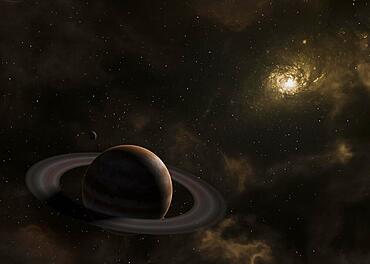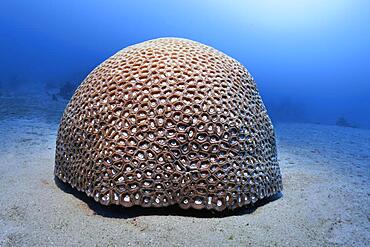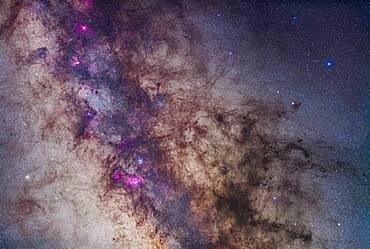Recent searches
Loading...
832-401234 - Canary Island amphora (Rumex lunaria) and lava bomb in front of the Caldera Colorada, Parque Natural de Los Volcanes, near Masdache, Lanzarote, Canary Islands, Spain, Europe
832-401233 - Lava bomb in front of Caldera Colorada, Parque Natural de Los Volcanes, near Masdache, Lanzarote, Canary Islands, Spain, Europe
832-398433 - galaxy night view. High resolution photo
832-396961 - Laubbaeume im Fruehling, gespiegelt in einer Glaskugel
832-396690 - Theme Decoration, Still life with withered hydrangea in clay vase next to wooden balls, Studio shot, Symbol photo
832-395771 - View upwards to a blue glass dome, one hand holds a glass ball in which the dome is reflected, Schirn Kunsthalle Frankfurt, Hesse, Germany, Europe
832-393723 - Hemispherical Favia stone coral (Favia speciosa), on sandy bottom Red Sea, Aqaba, Kingdom of Jordan
832-392668 - Giant stone sphere, Champ Island, Franz Josef Land archipelago, Russia, Europe
832-392670 - Giant stone sphere, Champ Island, Franz Josef Land archipelago, Russia, Europe
832-392667 - Giant stone sphere, Champ Island, Franz Josef Land archipelago, Russia, Europe
1350-29 - Omega Centauri globular cluster, with Canon 20Da camera with 4-inch Astro-Physics Traveler apo refractor at f/6 for 4 minutes each at ISO800. Stack of 4 exposures, averaged stacked. Plus short 2-minute exposure for core area. Taken from Queensland, Australia, July 2006.
1350-126 - Splendours of the southern Milky Way from Vela (at top right) to Centaurus (at bottom left), including the Carina Nebula, Crux and Coal Sack, and Alpha and Beta Centauri. A part of the huge Gum Nebula is at far right. The False Cross is at right, with the large cluster NGC 2516, the Diamond Cluster, below it. The globular cluster Omega Centauri is at upper left.
1350-135 - The colourful region around Antares in Scorpius, the yellow star at centre. To the right is the globular cluster Messier 4. Above right of Antares is the smaller globular NGC 6144. Above are the nebulas associated with Rho Ophiuchi. The area is filled with reflection (yellow and blue) and emission nebulas (red and pink). The field simulates a binocular field.
1350-35 - A mosaic of the region around the Small Sagittarius Starcloud and Dark Horse dark nebula complex. The field takes in the Milky Way from the Lagoon Nebula at bottom to the Eagle Nebula at top left. In between from top to bottom are the Swan Nebula (M17), and the Small Sagittarius Starcloud (M24). Flanking the bright M24 starcloud are the large open clusters M23 (right) and M25 (left). At bottom left is the M22 globular star cluster. The prominent dark nebula at right is the large Pipe Nebula (B78) with the small Snake Nebula (B72) above it. The whole complex is visible to the naked eye as the Dark Horse.
1350-105 - The spectacular field of Messier 8 and 20 emission and reflection nebulas in Sagittarius, with M8, aka the Lagoon Nebula below, and M20, the Trifid Nebula, above, all set in the rich starfields of the Milky Way. The diffuse nebula left of M8 is NGC 6559. Two globular clusters, NGC 6544 and NGC 6553, sit below and to the left (east) of M8. The Messier open cluster, M21, sits above M20.
1350-110 - Mars (at top) and Saturn (at left) in Scorpius (or thereabouts - Saturn is technically in Ophiuchus) above Antares and the dark and reflection nebulas around Antares. The globular M4 is visible to the right of Antares.
1350-13 - The centre of the galaxy area of the Milky Way toward Sagittarius and Scorpius, with the Sagittarius Starcloud right of centre, and the Lagoon Nebula (M8) left of centre. The Cat's Paw Nebula (NGC 6334) in Scorpius is at upper right, the Swan Nebula (M17) and Eagle Nebula (M16) are at lower left. To the right of them is the Small Sagittarius Starcloud (M24). At the very top is the Snake Nebula (B72). The main mass of dark nebula is the Pipe Nebula (B78). Above M24 at left is the open cluster M23 while below the M24 star cloud is the cluster M25. The globular M22 is at the bottom edge. At right of frame are the open clusters M6 (in the dark area of the Milky Way) and M7 (in the bright starcloud).
1350-92 - Comet Lovejoy (C/2104 Q2) on the night of Dec. 27/28, 2014, as it was approaching the globular cluster M79 at upper right, in Lepus. This is a stack of 5 x 3 minute exposures at ISO 2500 with the Canon 5D MkII and TMB 92mm refractor at f/4.4. Taken from near Silver City, New Mexico.
832-389860 - Mother-in-law chair (Echinocactus grusonii) or golden-ball cactus, cactus, spines, close-up, Botanical Garden, Dahlem, Berlin, Germany, Europe
1116-39728 - Detail of the center branching arms of a Crinoid or Feather Star (Lamprometra klunzingeri) open and feeding on plankton at night, Philippines
1116-39729 - Both a Crinoid Commensal Shrimp (Periclimenes cornutus) and a Crinoid Squat Lobster (Allogalathea elegans) on a crinoid. These tiny crustaceans are commensal on crinoids or feather stars and take their color from the host, Philippines
869-3707 - globular alga volvox dark field microscopy
869-3674 - globular alga volvox dark field microscopy
869-3673 - globular alga volvox bright field microscopy
869-3708 - globular alga volvox differential interference contrast microscopy DIC
869-3710 - globular alga volvox differential interference contrast microscopy DIC
869-3711 - globular alga volvox differential interference contrast microscopy DIC
869-3709 - globular alga volvox differential interference contrast microscopy DIC
869-3682 - globular alga volvox bright field microscopy
869-3685 - globular alga volvox dark field microscopy
869-4672 - globular alga volvox is found in ponds and ditches Up to 1000 single-celled green algae each one with a tiny pair of whip-like tails are linked together to form a hollow sphere Inside this sphere you can see smaller daugther-colonies which eventually come free when the original colony disintegrates magnification 60x at 5x7
869-3684 - globular alga volvox dark field microscopy
869-3675 - globular alga volvox dark field microscopy
869-3681 - globular alga volvox bright field microscopy
788-3330 - Bombshells arranged in a pyramidal shape, San Juan, Puerto Rico
You reached the end of search results








































